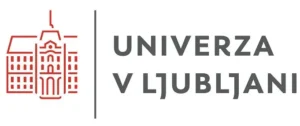News
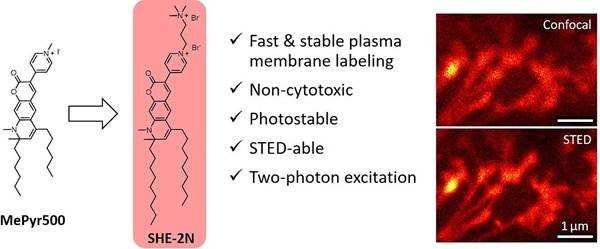
Article in Bioorganic Chemistry
Hana Kokot, Boštjan Kokot and Iztok Urbančič (Laboratory of Biophysics, Condensed Matter Physics Department, F5) have, together with colleagues from the Faculty of Pharmacy (University of Ljubljana), published a paper titled Amphiphilic coumarin-based probes for live-cell STED nanoscopy of plasma membrane in the journal Bioorganic Chemistry.
The authors synthesized and characterized a novel amphiphilic fluorescent label SHE-2N, which enables quick and long-lasting fluorescent labeling of the outer cell membranes of living cells. This new label for fluorescence microscopy is also suitable for high-resolution STED microscopy and two-photon microscopy due to its high photostability and appropriate spectral characteristics.
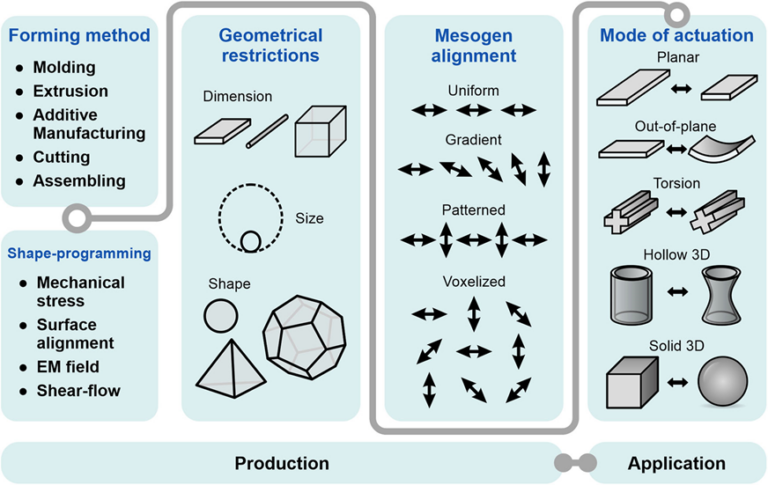
Article in Communications Chemistry
Andraž Rešetič, at the invitation of the editor of Communications Chemistry, published a review article titled “Shape programming of liquid crystal elastomers,” Commun Chem 7, 56 (2024), in which he provided a brief overview of current shape programming methods for liquid crystal elastomers (LCEs). LCEs are materials that reversibly change shape when exposed to external stimuli, such as light or heat. The local arrangement of liquid crystal components in LCEs affects the complexity of the shape response, and this arrangement is programmed into the material using various processes, including mechanical deformation, external electric or magnetic fields, polarized light, and other methods. As an unavoidable part of LCE synthesis, these processes also introduce geometrical constraints and influence the final size and amount of synthesized material. Therefore, the applicability of LCEs is highly dependent on the methods used. In the article, the author explored these limiting factors and provided his perspective on the future implementation of LCEs in everyday applications.
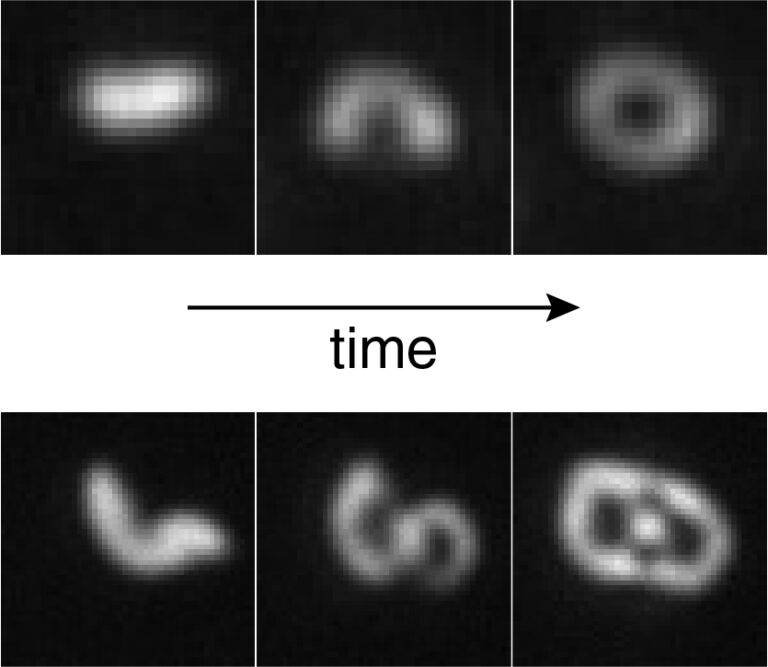
Article in Physical Review Letters
Journal Physical Review Letters published a paper “Dynamics and Topology of Symmetry Breaking with Skyrmions”, by Jaka Pišljar, Andriy Nych, Uliana Ognysta, Andrej Petelin, Samo Kralj and Igor Muševič, from J. Stefan Institute and Institute of Physics, Kyiv. The authors showed how the formation of the half-skyrmions-vortices from the high temperature isotropic phase dramatically changes as the chiral liquid crystal sample is confined to thickness below 100 nm. They observed unusally slow fluctuations, which represent spontanoeus formation and decay of individual half-skyrmions, also shown in the accompanying figure. The rate of such dynamics is 4 orders of magnitude slower of what was expected and is explained by the mechanism of thermal hopping between states, which become energetically accessible due to the strong confinement effects. This phenomenon is interesting from the topological point of view as well, as the experiments reveal the mechanisms of topological charge conservation at the phase transition. The paper was also highlighted in the journal Physics.
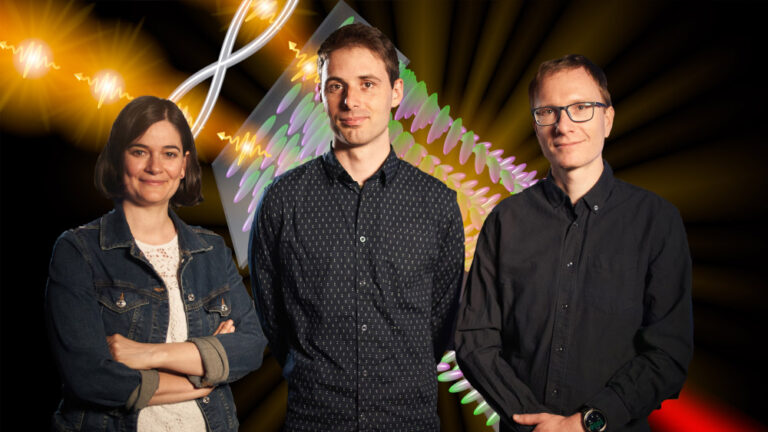
Article in Nature
Aljaž Kavčič and doc. dr. Matjaž Humar from the Laboratory for biological and soft photonics, Department of Condensed Matter Physics, along with dr. Nerea Sebastian from the Department of Complex Matter at the “Jožef Stefan” Institute, in collaboration with colleagues from the “Max-Planck Institute for the Science of Light”, have published an article in Nature titled Tuneable entangled photon pair generation in a liquid crystal. In their work, they, for the first time, demonstrate the generation of entangled photons in liquid crystals and, with this, in any organic material. In addition to the fact that the efficiency of entangled photon generation in liquid crystals is comparable to the best existing sources, their main advantage lies in the tunability of the state of photon pairs. This tunability can be achieved by applying an electric field or by arranging the liquid crystal molecules into the appropriate configuration. The ability to tune the quantum state indicates significant practical potential for numerous quantum technologies. A summary of the research can also be viewed in a short video.
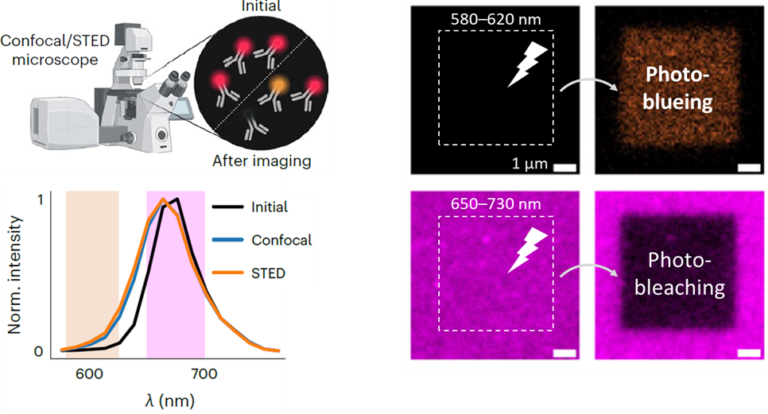
Article in Nature Methods
Iztok Urbančič and Boštjan Kokot (Laboratory of Biophysics, Condensed Matter Physics Department, F5) have, together with colleagues from the Institute for Applied Optics and Biophysics (Jena, Germany), published a paper titled Effects and avoidance of photoconversion-induced artefacts in confocal and STED microscopy in Nature Methods. Authors have shown that high laser powers in fluorescence microscopy should be used with care; besides the well-known photobleaching, the dye’s emission spectrum can shift towards lower wavelengths (“photoblueing”). The fluorescence signal is consequently detected in another spectral channel attributed to another dye, possibly leading to erroneous experimental conclusions. The characterization of this phenomenon was made possible by a unique combination of a STED microscope equipped with a spectral detector, implemented at JSI.
